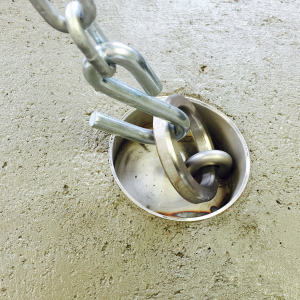- Joined
- Sep 2, 2013
- Messages
- 5,100
I would put them in the floor. Easy to make from some steel pipe and plate, and a chunk of 1/2" chain. Wish I had put some in when I poured my floor, but got in a hurry and didn't do it. I think I'm going to core bore some holes in my floor and epoxy them in. Here is a pic I found, but I would make it out of heavier stock. Mike



